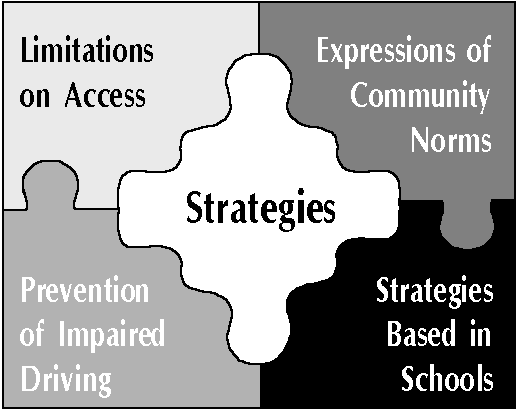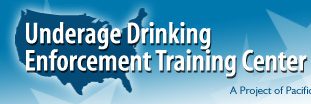The Training Center has created a framework for understanding the effective prevention strategies that are available to prevent underage alcohol use. The framework divides strategies into four types that can be seen as interrelated pieces of the prevention puzzle.
 |
The four types of strategies in the prevention puzzle include:
|
Types of Strategies
|
Strategies that limit access to alcohol by youth are some of the most powerful and well-documented approaches to reducing underage drinking and related problems. Examples:
|
Strategies designed to express a community norm against underage use are less well supported by specific evaluations but are thought to be powerful approaches, especially as adjuncts to other efforts. Examples:
|
Some prevention strategies usually applied in schools have been shown to have some effect on underage drinking. Examples:
|
One of the most serious and immediate consequences of underage drinking is traffic crashes that result from impaired driving. Young drivers, who are less experienced and less mature, are especially vulnerable to the effects of even low levels of alcohol. The combination of drinking and driving for this group is too often fatal. Fortunately, there are a number of highly effective strategies to reduce impaired driving. While these strategies have not been shown to affect drinking per se, they are extremely important (and effective) in reducing the negative consequences of underage drinking. Examples:
|
